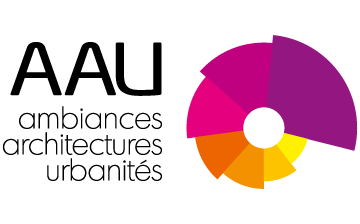Médiance, ambiantalité et « réadaptation » des espaces oukalisés à valeur patrimoniale : l’éloge d’une alter-patrimonialisation
Mediance, ambientity and “rehabilitation” of oukalized spaces with heritage value: the commendation of an alter- patrimonialization.
HAMROUNI Anwar - Thèse de doctorat soutenue en 2023
Encadrement : Directeur : Marc BREVIGLIERI Co-directeur : Hind KAROUI Encadrante : Toumadher AMMAR
Financement :
FR
Au cours des dernières décennies, l’intérêt patrimonial en Tunisie s’est traduit par des stratégies d’intervention, de conservation et de mise en valeur d’un existant ayant une valeur historique, sociale et/ou symbolique, définissant un ensemble de pratiques et de discours. Toutefois, la technicité des diverses approches, et leur montage institutionnel ; souvent lourd et lent ; peinent à traiter l’aspect sensible, affectif, les chroniques ambiantales, les récits de vie et la mémoire du lieu.
Partant du cas des espaces oukalisés à valeur patrimoniale, situés dans les quartiers anciens de la banlieue de Tunis, la présente étude pose la question de la médiance et de ses enchevêtrements avec le sentiment de la situation vécue par les usagers. Deux mondes cohabitent : le bâtiment à valeur patrimonial avec ses richesses, son importance historique et ses caractéristiques spatiales d’une part, et d’autre part, la nouvelle manière de l’habiter, de le transformer en un chez-soi : « un habitat d’un type nouveau » souvent partagé et mis en commun.
A la fois lieux de mixité, de précarité et d’illégalité, ces espaces donnent lieu à une nouvelle fabrique des modes d’occuper et de transformer la ville, assujettie à des temporalités multiples, des « chronotopies » (M. Bakhtine, 1978), dictées par la capacité des occupants à les réinvestir, à travers des manières de faire, des détournements, des (ré)ajustements et des (ré)appropriations.
Le présent travail tente ainsi d’interroger le processus de patrimonialisation des bâtiments « oukalisés » par le biais d’une approche ethnosociologique et immersive, pour suivre les squatteurs dans leurs pratiques quotidiennes et comprendre leurs motivations, interactions et investissements. Ce moment d’investigation in-situ et in-vivo nous permettra de détecter des « alter-patrimonialisations » définies par la capacité de ces lieux à soigner l’estime sociale des occupants, à constituer un élément d’identification et d’affirmation du soi. De surcroît, nous faire comprendre les logiques d’incrustation, les frontières de promiscuité, du partage et le trauma d’expulsion
Mots-clés:
Ambiances, Médiance, Mémoire du lieu, Oukalisation, Squat, alter patrimonialisation, réappropriation, démarche participative, cohésion sociale.
EN
Over the past decades, heritage’s interest in Tunisia has resulted in strategies of intervention, conservation and enhancement of an existing having a historical, social and / or symbolic value, defining a set of practices and speeches. However, the technical nature of the various approaches, and their institutional set-up; often heavy and slow; struggle to deal with the sensitive, affective aspect, ambient chronicles, life stories and the memory of the place.
Based on the case of oukalized spaces with heritage value, located in the old districts of the suburbs of Tunis, this study raises the question of mediance and its entanglements with the feeling of the situation experienced by users. Two worlds coexist: the building with heritage value with its wealth, its historical importance and its spatial characteristics on the one hand, and on the other hand, the new way of living in it, of transforming it into a home: « a habitat of a new type” often shared and pooled.
Simultaneously places of diversity, precariousness and illegality, these spaces give rise to a new fabric of ways of occupying and transforming the city, subject to multiple temporalities, « chronotopias » (M. Bakhtine, 1978) , dictated by the capacity of the occupants to reinvest them, through ways of doing things, diversions, (re)adjustments and (re)appropriations.
This work thus attempts to question the heritage process of « oukalized » buildings through an ethnosociological and immersive approach, to follow the squatters in their daily practices and understand their motivations, interactions and investments. This moment of in-situ and in-vivo investigation will allow us to detect « alter-patrimonializations » defined by the capacity of these places to heal the social esteem of the occupants, to constitute an element of identification and affirmation of the self. In addition, to make us understand the logics of incrustation, the borders of promiscuity, sharing and the trauma of expulsion.
Keywords :
Ambiances, Médiance, Memory of the place, Oukalisation, Squat, alter patrimonialization, reappropriation, participatory approach, social cohesion
